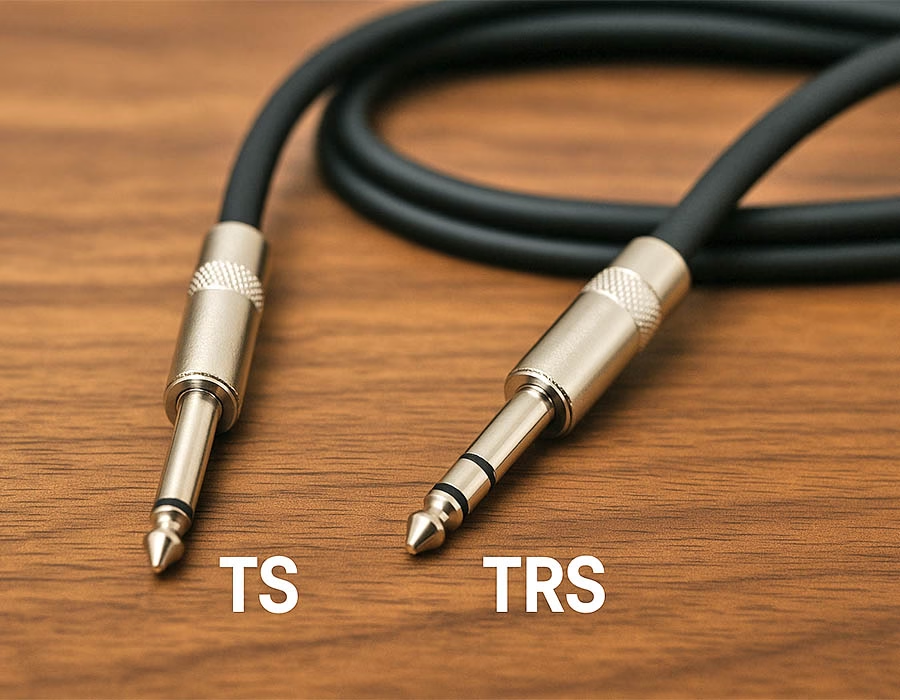Cable shielding is essential to protect data and power transmission from interference, especially in environments with high levels of electromagnetic interference (EMI). A conductive layer around shielded cables prevents EMI from affecting signal integrity and minimizes data loss. Here, we will take an in-depth look at the different types of cable shielding, the best time and place to use cable shielding, and the essential factors to consider when choosing the right cable.
Types of Cable Shielding

- Unshielded Twisted Pair (UTP): These cables do not have any shielding and are generally more affordable and flexible. However, they lack EMI protection, making them suitable for low EMI environments.
- Foil Shielded Twisted Pair (F/UTP): All twisted pairs are foil-shielded and offer essential EMI protection, making them an affordable choice for moderately noisy environments.
- Unshielded Foil Twisted Pair (U/FTP): Each twisted pair is individually wrapped in aluminum foil for a higher level of EMI immunity and is typically used in environments where substantial noise isolation is required.
- Shielded Foil Twisted Pair (S/FTP): combines foil shielding around all conductors with individual shielding of each twisted pair to provide a high level of EMI immunity. It is typically used in industrial and high-data-rate applications.
- Coaxial Cable Shielding:
- Braided Shielding: Using tightly braided copper or aluminum wires to prevent interference and keep radio frequency (RF) signals free of interference.
- Double Shielding: Combines a braid shield with an aluminum shield to provide better protection and extend the transmission distance of RF signals.
- Quadruple Shielding: Two layers of foil shielding and two layers of braided shielding provide the highest level of protection and are ideal for high-frequency and RF-sensitive applications such as video surveillance.

When to Use Shielded Cables
Shielded cables are essential in high EMI environments such as:
- Industrial settings: Manufacturing plants with heavy machinery that generate high levels of EMI.
- Airports: High electronic equipment and radio signal levels require reliable interference control.
- Broadcast and Radio Stations: Avoiding signal interference from other broadcasting and electronic equipment.
- Consumer Electronics: Shielded cables in devices such as TVs and mobile phones prevent EMI from affecting performance.
In contrast, unshielded cables are easy to install, flexible, and cost-effective enough for most residential and low-EMI environments.
Industry Applications of Shielded Cables
Shielded cables play an essential role in a variety of industries:
- Communications: Commonly used in CCTV, alarm systems and access control systems where interference-free transmission is necessary.
- Defense: Military equipment relies on shielded cables to maintain reliability in unpredictable electromagnetic interference.
- Aerospace: Aircraft are rife with EMI and RF sources, so robust cable shielding is necessary.
- Medical Equipment: For monitoring and diagnostic equipment, shielding ensures accurate results near high-frequency medical tools.
Considerations for Effective Cable Shielding
Effective shielding depends on proper grounding and cable selection. Here are some key factors:
- Grounding: To prevent signal problems, shielding must be connected to a low-impedance ground path. Grounding at one end reduces potential ground loops and ensures reliable EMI protection.
- Environment: Foil shielding is sufficient in moderate noise areas. Braided or foil-braided shields provide better durability and immunity for high EMI spaces.
- Flexibility Needs: Pure foil shields should be avoided for flexible applications, as they can tear with movement. Spiral-wrapped shields are better suited for repeated bending.
- Connector Quality: To maintain EMI protection, the connectors should match the cable’s shielding rating, preferably with 360° shielded terminations.
- Data Sensitivity: Shielded cables should be chosen when handling sensitive or critical data, especially in industrial and high-risk areas susceptible to tampering or interference.
Choosing Between Shielded and Unshielded Cables
The choice ultimately depends on the environment and application:
- Shielded cables are ideal when electromagnetic interference is present or expected because they minimize interference and signal leakage, thus maintaining signal integrity.
- Unshielded cables are typically suitable for low EMI environments, such as residential areas, and are affordable and easy to install without sacrificing essential performance.
Understanding these differences and applications allows you to choose the most appropriate cable type for your environment, ensuring data reliability and efficient signal transmission. At Romtronic, we have over 28 years of cable assembly and harness manufacturing experience to provide guidance and solutions for your shielding needs. Contact us to find out how we can provide rugged, tamper-resistant cable assemblies for your next project.
For shielding materials, please see Introduction to Shielding Materials.

Apple Liu is Romtronic’s Marketing Manager, focusing on business growth across the Asian market. With a background in International English and eight years of sales experience in the electronic cable and harness industry, she brings both in-depth industry knowledge and a global outlook to her role.
In addition to leading market strategy, Apple also oversees content development and editorial work—crafting clear, engaging messaging that reflects Romtronic’s values and technical strengths. She is passionate about digital engineering and is committed to strengthening Romtronic’s brand presence and innovation in a competitive global landscape.


